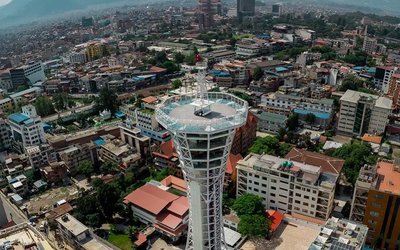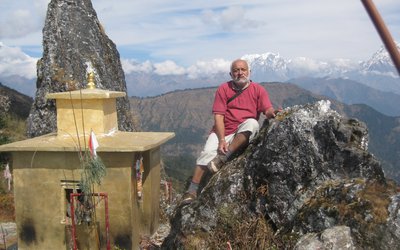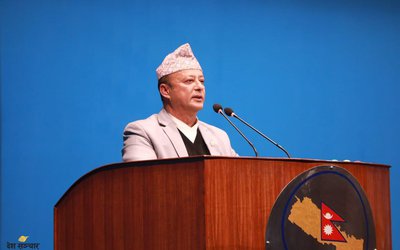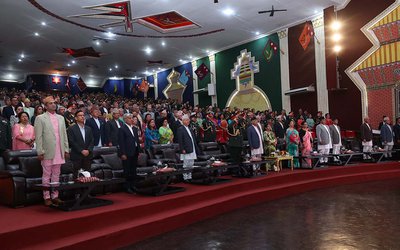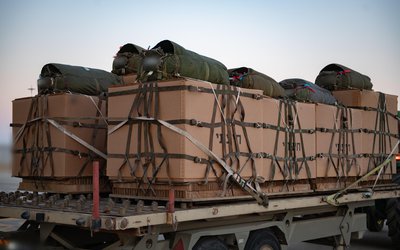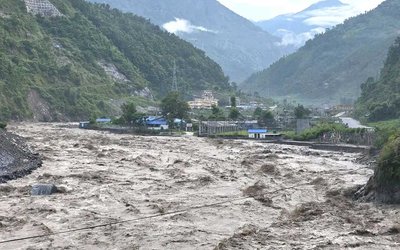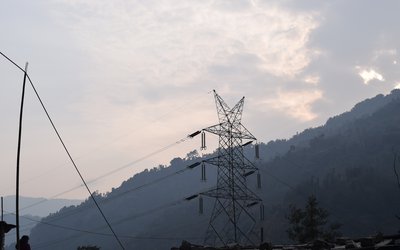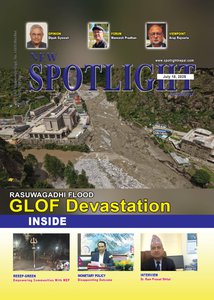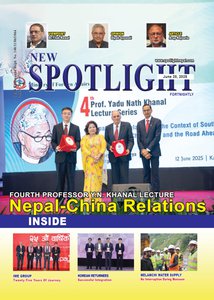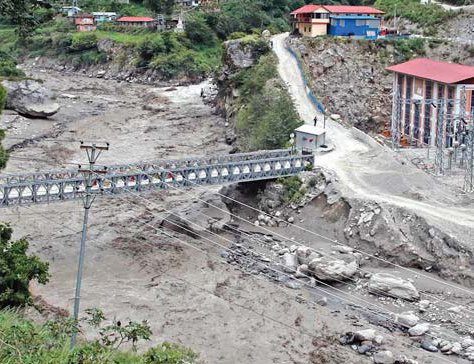
For the reasons big and small including a lack of adoption ofsound macroeconomic policies and institutional reforms, the national aspiration for turning Nepal into a green energy centre of South Asia hasfailed to attain success so far though nature bestowed on us immense resources.We could neither develop adequate electricity infrastructures ourselves nor build a comprehensive economic partnership for the same with our neighboring countries, especially India, with whom Nepal has also signed some river-based treaties and power trading-based agreements. Though these treaties or agreements cannot be unilaterally blame don their entirety for inherent flaws and prejudices from the national perspectives, there are still traceable spots to bemoan that Nepal, at those times, had limited knowledge and expertise which were not enough to secure rights, benefits, interpretation and execution in the aftermath of signing them. Despite various frameworks and mechanisms to deliberate on them and implement the key provisions for the win-win scenario to both the countries, it somehow did not grasp the candor and flexibility to manage, monitor and innovate the inner contents. Just taking an example of the Mahakali Treaty, the time span of over 29 years since 1996 to this date speaks volumes what could be achieved and how the conceived dreams shattered. It’s hard to draw inference whether it was due to the structural failure of the treaty itself or it was due to our wrong political, bureaucratic, diplomatic and perceptional approaches.However, the reality is that both sides are still not at a ready positionto sign a mutually-agreeable deal on the Pancheshwar project and, of course, poor willingness and tenuous commitments at the political level have met sharp criticism in this regard. Unless both sides search for more agreeable grounds, differences always tend to be amplified and what looms around are doubts, fears and uncertainties. It’s a pity that no political parties of the country have shown a strong propensity for such deals of geopolitical nature, having forgotten that ideologies of development should bend towards production-based economy and, like the US President Donald Trump’s so-often-used slogan “drill, baby, drill” for energy production, their election manifestos should trigger a call for production and trade by figuring out economic contexts and growth strategies.
Besides bilateral perspectives, the weakness also lies inNepal’s own internal matters to tap the optimum economic potential out of the river-based opportunities, especially in energy landscape. Electricity Act 1992 and its rules along with Hydropower Development Policy 2001 were more focused on licenses of generation projects,without providing strong insights into transmission infrastructure development, power trading ecosystem and deregulated power market regime, all of them being indispensable elements in the electricity value chain.
So long as our dilemma to enhance or not the private sector’s role in electricity industry, as clearly signaled sometimes through some policy departures as observed in the past, it will tend to constitute a threat to energy security of the country, which is already down to energy hardship. The bigger terror standing in front of us is the growing impact of climate change. We don’t have to wait for future to see it. It is becoming real and ferocious even at present. We can ponder how we are terribly shaken by the surrounding examples like a recent devastating flood, undoubtedly caused by climate change impacts possibly linked with supraglacial lake drainage or proglacial lake outburst flood in the Lhende Riverflowing from Tibet into Nepal and harming, inter alia, many energy infrastructures includingthe headworks of Rashuwagadhi hydropower project (111 MW) which was commissioned in November 2024 after taking so many years of construction since its PPA signed in November 2011.
Despite the growing feelings toward the unavoidable need of constructing resilient infrastructures, including those for hydropower projects and transmission facilities, casualties resulted from such climate change cases are so rampant and beyond control that our economy, technology and the level of our preparedness cannot effectively cope with it. That is why, while coming to the energy production again, it is to be emphasized that handcuffing of the private sector through chaotic and dangerous policy weapons should be totally stopped to save the enormous scope of hydropower development from obliteration.
Further, we are in so vulnerable position that the occurrence of any masterstrokes of geopolitical nature will be beyond our managerial capacity. We cannot say that we have accomplished our mission just because we have been able to generate some surplus electricity in the past (in fact, it isn’t surplus, it’s seasonal surplus) like 1946 million units exported to India against the backdrop of 1895 million units of dry-season import during the last fiscal year 2023/24. With this much of surplus electricity and long-term power purchase agreements for a bit higher than 11,400 MW of installed capacity, it seems that we are afraid of a long list of many elements today: afraid of limited domestic market, afraid of cross border power trade, afraid of transmission infrastructures, and finally, speaking frankly, afraid of private sector, too. Why so? Can we hold to a consistent, coherent goal of achieving green energy missions in this way? Still, why are we not bold and confident to reach our goals? Let us be clear, not to be afraid of, that we are not building bombs; we are building electricity plants and there are solutions to go forward.
Nothing is impossible, but well-planned actions are indispensable. The existing transmission infrastructures can be built and strengthened. The small domestic consumption of Nepal of about 400 kilowatt-hours,which is quite low while referencing to the Indian context of 1538 kilowatt-hours, though two economies are not comparable by size, can be increased through economic and commercial activities like green hydrogen, data-based industries and agro-processing. Cross border power market can be expanded and extended through bilateral cooperation and market integration. More innovative market products like electricity futures against the short-term and spot-market price volatility and modern technologies like Gid-Forming (GFM) Inverters for providing inertia to grid and enhancing grid stability to fight intermittencies caused by the excessive variable renewable energy integration are being, or on the verge of being, deployed in India and they can be gradually introduced in Nepal also, after evaluating overall conditions, through proper legislation, regulation, institutionalization and collaboration.
Among various reasons why we should step up our own capacity in electricity production, two prominent ones are climate change impacts and geopolitical upheavals that cannot be completed ruled out in the ongoing regional and global context.To be clear: let us not be a nation unprepared for bearing responsibilities during energy emergencies caused by them. With regard to external factors,not only the geopolitics involving neighboring countries is to be taken into account, but also the international geopolitics is powerful so as to inflict unimaginable effect on our daily lives and the national economy. Geopolitically, we can take the fresh example of Israel- Iran-US war which was about to trigger the risk of closing the Strait of Hormuz, the most vital checkpoint in the global economy,by Iran. Had it taken place, it would have impacted over 40% of India’s crude oil and natural gas import, ultimately leading to disruptions in the overall energy supply chain involving Neal, too,since we heavily rely on fossil fuel import from India. The energy price including the one linked to electricity buyable and sellable through the Power Exchanges of India could have soared in such a way that its stress on our economy could be terrible and, beyond price surges, the certainty of electricity availability through import from India during dry season months would have been largely threatened. It abundantly provides the rationale why Nepal should accelerate the pace of hydropower development to build its energy independence strength to save the country from any geopolitical upheavals including those connected to energy supply in future.
While strategic considerations in this regard cannot be undermined, the other side of the story holds the ominous clouds of climate change which cannot be separated from hydropower development in the context of Nepal. Lessons should prompt the hydropower developers, and even the Government, toarrange more funds on account of the possible climate change impacts in the detailed studies of the candidate projects before going for construction and it, of course, demands resilient infrastructure. It will ultimately makeour hydropower projects costlier than before, the other reason being,inter alia, additional costs of insurances required to cover both infrastructure damage and business interruption. If our projects fall prey to force majeure events affecting the generation or the generation schedule, cross border power trading can be immensely helpful for alternatively ensuring the supply delivery to consumers in such emergencies. In all such circumstances including those associated with electricity surplus or deficit or emergencies triggered by natural calamities, India is the best and multiple-option market for Nepal to be interconnected through cross border transmission lines though it does not mean that the progress we have made so far towards the sub-regional integration should be halted under any pretext.
It's a pivotal moment for Nepal’s power sector transformation, fueling broader socioeconomic development. At least, let’s clear the long-pending new Electricity Bill by addressing major concerns of the stakeholders. Let us hit the start button through policy making for power trading paving the way to private sector companies also. Accelerated grid expansion, market creation and associated regulations including those for transmission pricing, open access and deviation settlement should be prioritized for their earliest deployment since they will act as enablers for fostering competition, enhancing power supply quality, reducing electricity prices and letting the Government entities like Nepal Electricity Authority relieve of extra burdens beyond its real capacity. It’s not just about adopting new paths, but about fundamentally reshaping Nepal’s entire power sector.
The Government’s Energy Development Roadmap, which may also be termed as Vision 2035, will be a testament to the nation’s huge transformation with its emergence as a resilient economy. But commitments with clear-cut plans and strategies are required. Various countries have adopted their own approaches to achieve such ambitious goals. In this regard, the recent course embarked on by Bhutan to achieve the goal of additional 20,000 MW of green energy production by 2040 througha credible partnership with the Adani Group of India, resulting inthe certainty for power generation, transmission and market access deserves admiration. Let Nepal plan, build and execute its own strategies to achieve its power sector visionby aligning investment flows with policy matters.
The future of Nepal’s energy sector is bright, diverse and full of possibilities, beaming with pride. The people of this country have entrusted their leaders to this this elevation and transformation of the country. It means accelerated power generation, prioritized transmission and urgent market opening to private sector. Of course, some storage projects like Budhigandaki and Dudhkoshi need to be immediately started to avoid seasonal dependence on power import in future. Having grounded in the hard facts of energy security, energy transition and job opportunities, critically engaging with the prejudices of the energy sector is central to the Government’s role to be played under various undeniable dimensions. But the proactive supports to the Government from all stake holders including scholars, experts and former bureaucrats are desperately needed to reach the destination before it gets dark.
The author is a Senior Energy Expert and the former Deputy Managing Director of Nepal Electricity Authority.

Prabal Adhikari
Adhikari is an Energy Expert and the former Deputy Managing Director of Nepal Electricity Authority. He can be reached at prabaladhikary@gmail.com
- Power Sector Uncertainties Tracking Peril And Paradoxes
- Jun 18, 2025
- FROM STATEHOOD TO REGIONHOOD: Expediting Nepal-Bangladesh Power Trade
- Jun 18, 2024
- FROM POLITICS TO GEOPOLITICS: The Echoes Of Electricity
- May 07, 2024
- WAKEUP CALL FOR NEPAL: Energy Security Splashing Shame On Water Resources
- Apr 03, 2024
- STRIFE IN NEPAL’S ENERGY SECTOR: Unlocking the Power of Hydropower
- Mar 28, 2024

